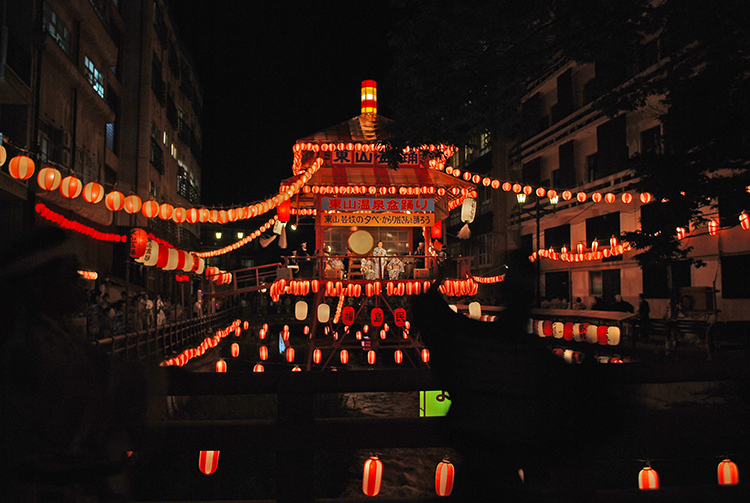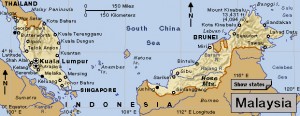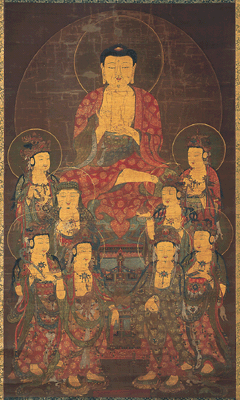Japan’s Obon Festival
Wednesday, August 15th, 2018August 15, 2018
From August 13 through today, August 15, people celebrate the annual Obon festival in Japan and in Japanese communities around the world. Also called the Bon, Bon Odori, or Urabon festival, Obon is a Buddhist event that marks the spiritual return of dead ancestors to the living world on Earth. Because lanterns are hung to guide the souls of the dead, Obon is sometimes called the Festival of Lanterns. In some parts of Japan, the festival takes place in July.

Lanterns illuminate the night and guide the spirits of the dead during the Obon festival in Japan. Credit: Yoichiro Akiyama (licensed under CC BY-SA 2.0)
According to the Buddhist sutra (scripture) Urabon-kyō, Buddha’s disciple Maudgalyāyana found his deceased mother in the Realm of Hungry Ghosts, where spirits suffer from eternal hunger and thirst. Maudgalyāyana tried to give her a bowl of rice, but it burst into flames. He went to the Buddha for help, and was instructed to offer food and drink to monks on the 15th day of the seventh moon, the traditional end of Japan’s rainy season. The act of gratitude and respect freed Maudgalyāyana’s mother from her torment, and he danced with joy. By repeating the disciple’s offerings—and his dance—each year, Buddhists honor the dead and celebrate the relief of their suffering.
The three-day Obon begins with mukaebi, the lighting of fires and lanterns to guide spirits home. Many families build two altars of fruit, incense, and flowers called shōryō-dana. One altar is for ancestors, and the other is for any spirits who have not attained peace. Other common rituals include ohakamairi, the cleaning and decoration of ancestral tombs; prayer services at temples; and the preparation of special foods. Bon Odori, a Buddhist folk dance, is performed during the festival. Dancers in elaborate costumes form a circle around musicians and taiko drummers. (Taikos are large ceremonial drums.) Obon ends with okuribi, when fires and lanterns are again lit to bid spirits farewell. Some communities celebrate Obon with carnivals and other outdoor events.





